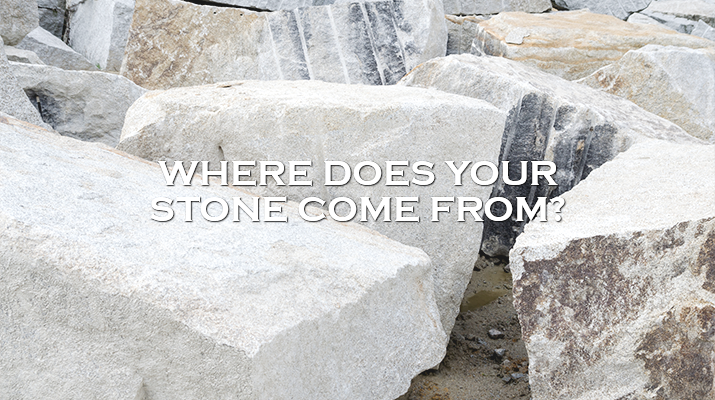When looking at a finished stone staircase or fireplace, it is easy to be awestruck and forget that before all of the hard work and craftsmanship, these were once huge, or not so huge, slabs of stone below the earth.
Moleanos Stone
Like many of the stones that we work with, Moleanos is named for the area in which it is quarried. On the western coast of central Portugal is the province of Alcobaça; at the foots steps of the Serra D´Aires e Candeeiros Natural Park you will find the village of Moleanos, from which this stone takes its name.
Moleanos stone is a popular choice for staircases and flooring and is used in many of our projects. It’s a fairly consistent off-white stone that is readily available in the large, thick slabs we need for staircase treads.
This floating staircase is a good example, with the stone being seen from all angles.
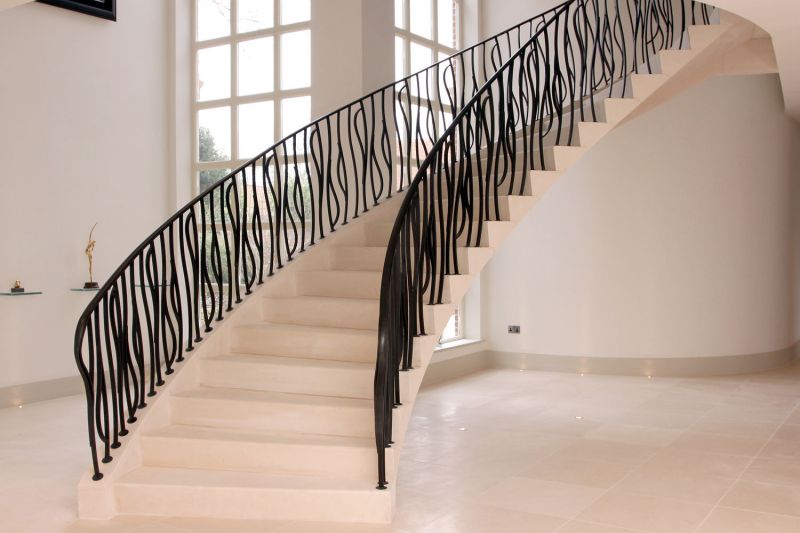
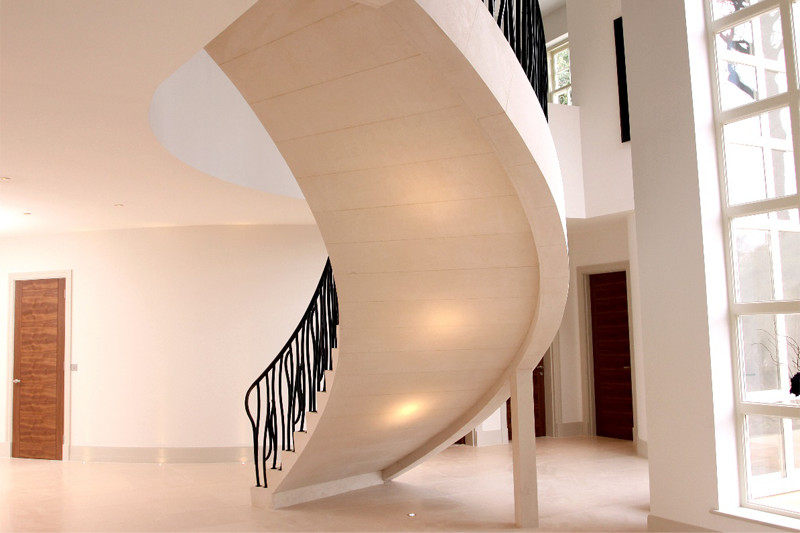
Black Granite
There are many places where Black Granite can be found, with each location offering different qualities. Despite being so far apart, you can find Black Granite in locations like China, Egypt, Finland, India, Africa and the United States.
We generally use Black Granite as a detailing stone to accentuate and enhance the look and feel of another stone.
An example is this Ancaster Weatherbed fireplace, where we contrasted the Ancaster stone with granite detail. The lining to the fire chamber softens the outline of the fire basket.
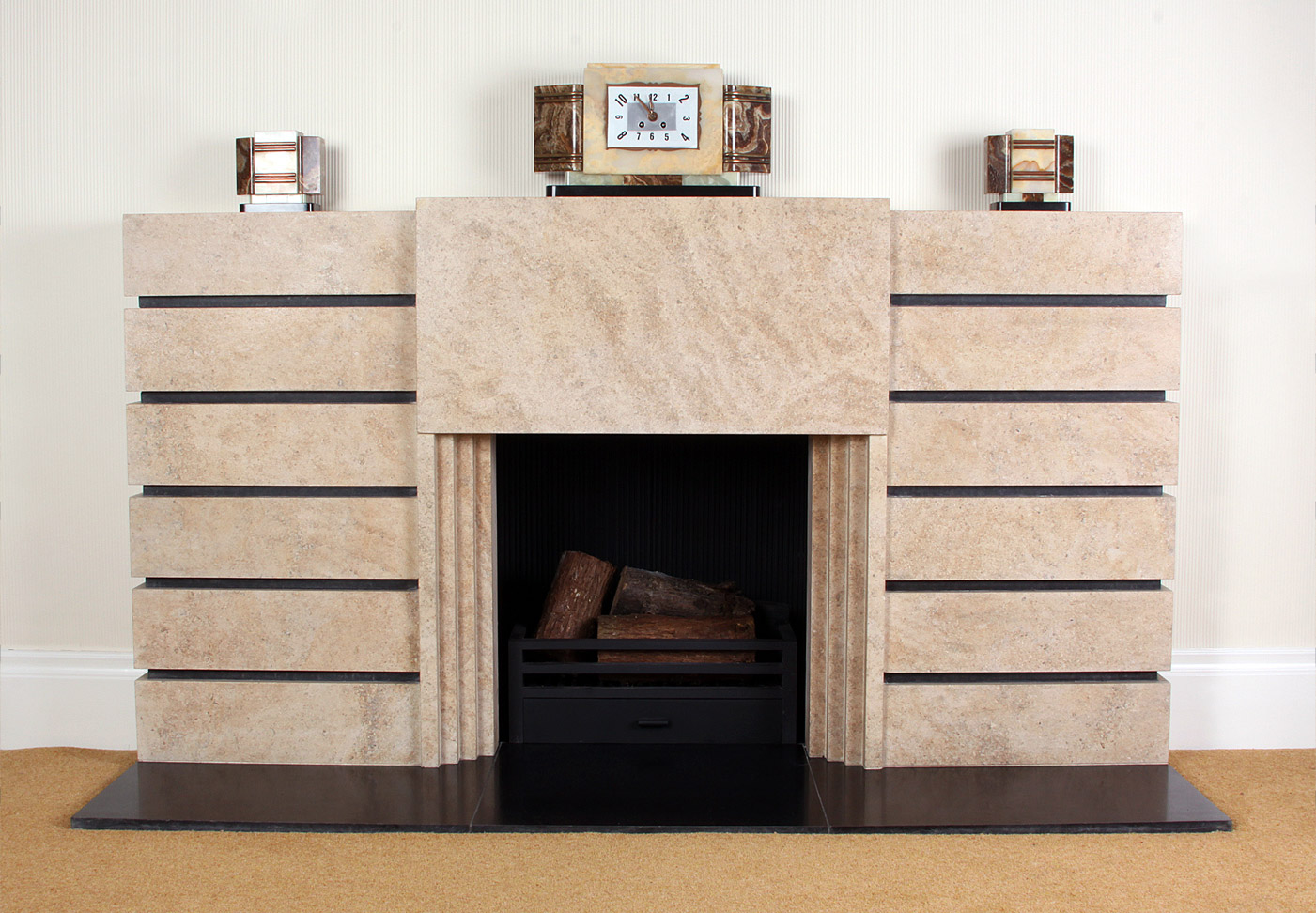
Ancaster Stone
Ancaster is another stone named after its quarrying location. In the East Midland of England, in the county of Lincolnshire, is the village of Ancaster, where you can find several quarries harvesting this Middle Jurassic limestone. The truth of the term is that ‘Ancaster’ is only a general phrase to refer to three kinds of stone:
- Ancaster Hard White – A consistent creamy colour and texture.
- Ancaster Weatherbed – Contains many shells and fossils, sometimes contains blue seams.
- Ancaster Freebed – A fine-grained cream colour.
The best example of our use of Ancaster stone is our work for the renovation of the Grosvenor Pulford Hotel & Spa. The grand staircase was carved from Weatherbed, with matching floor tiles, while the fireplace was made with Ancaster Hard White. Coming from the same quarry, the two stones complement each other perfectly.
Unlike many of the European stones we use, Ancaster comes out of the ground looking more ‘rock-like’. The often means that we have to spend a lot of time selecting the material, to ensure we have consistency. To create the staircase at The Grosvenor Pulford we went through more than 60 tonnes of stone.
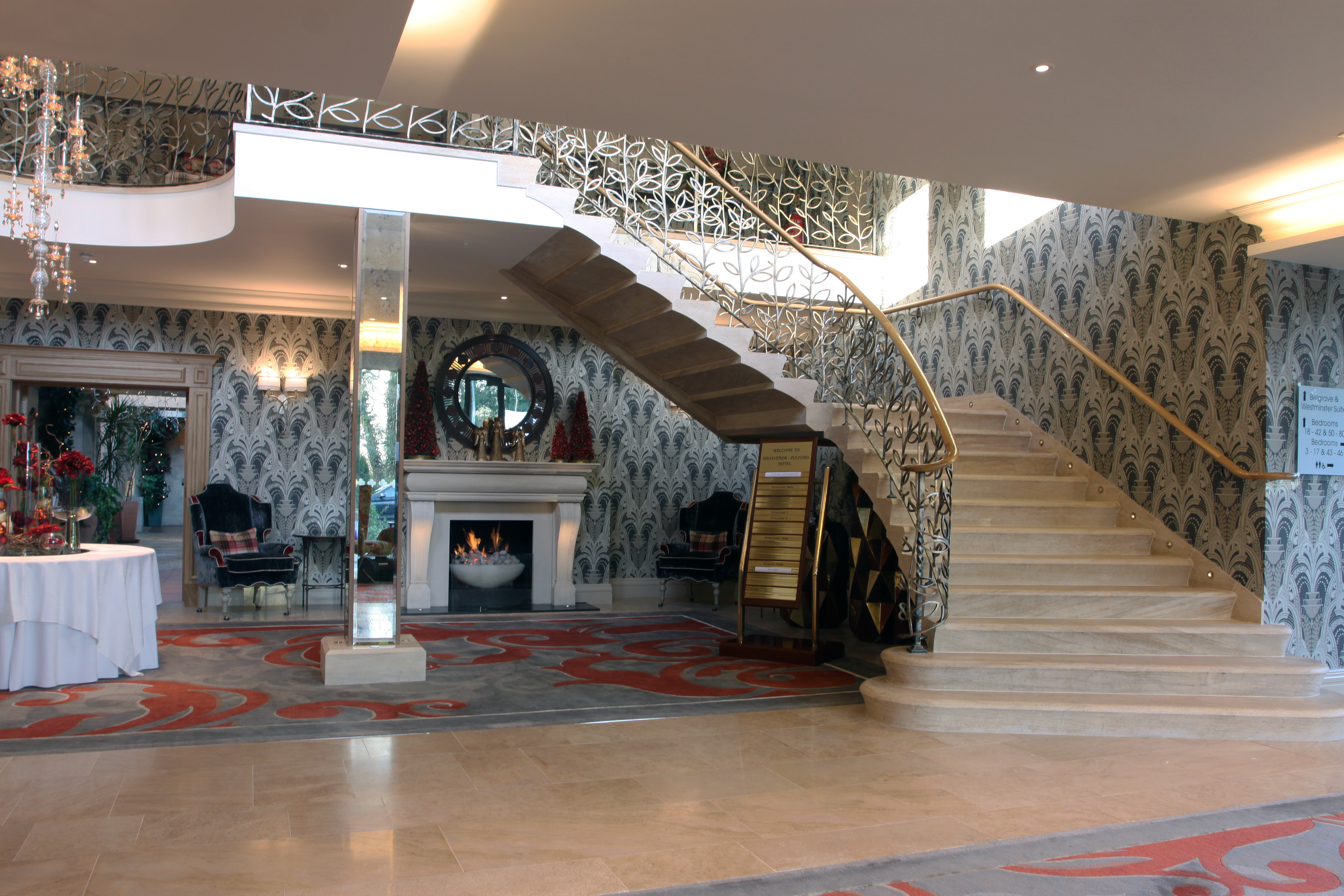
Portland Stone
On England’s south coast county of Dorset is the Isle of Portland, home of the renowned Portland stone. Like Ancaster, it comes in three beds that are all be quarried from the same area, with their defining differences emerging at different levels of age and depth:
- Basebed – the oldest and bottom-most layer with the most pure, consistent colour and grain.
- Whitbed – the middle layer of Portland stone with slightly more texture and colour variation.
- Roach –the youngest and top-most layer of stone with the most variation in colour and texture, as well often including impressions of shells and marine life.
Basebed is sometimes referred to as the ‘London’ stone due to its extensive use throughout the capital city.
This property had a traditional cantilever staircase in the existing part of the building and a chunky modern stair down into the basement. The use of Portland Basebed on both flights and the flooring ties the whole scheme together seamlessly.
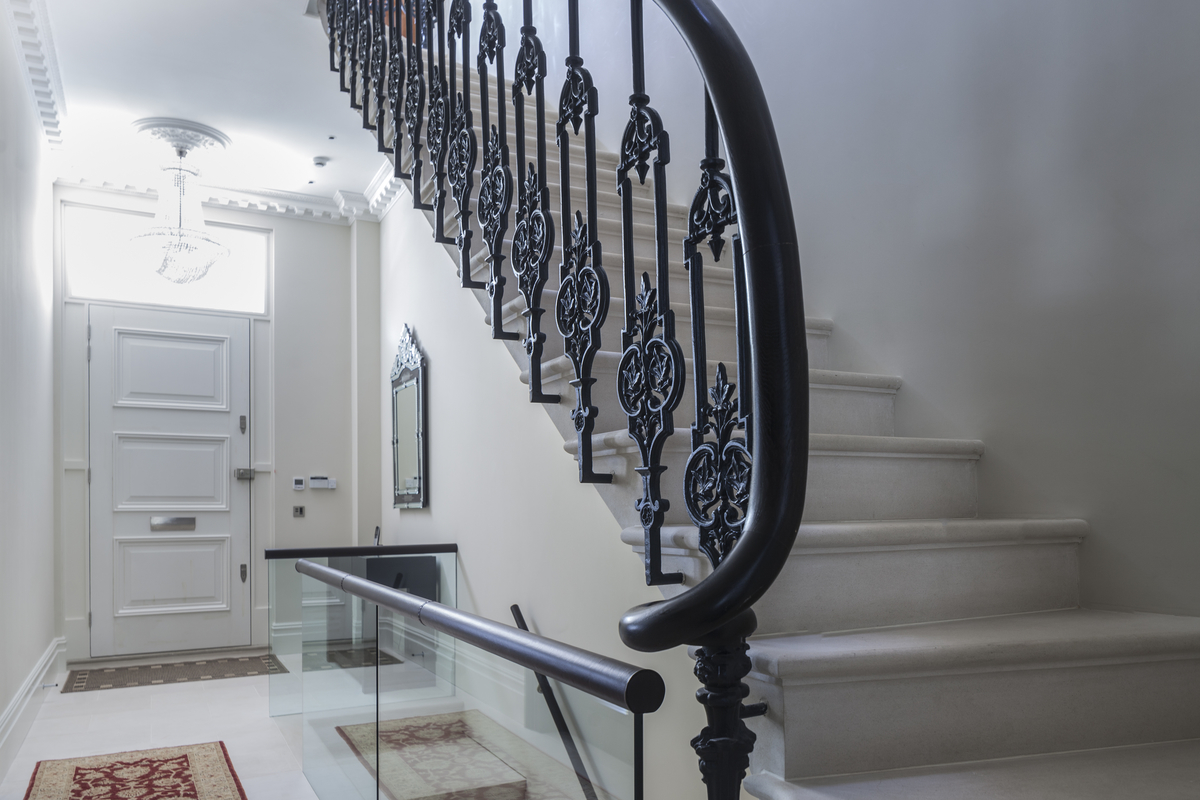
Bath Stone
Lastly is Bath stone, quarried near the city of Bath in Somerset. It’s hard to go anywhere in Bath without seeing a building that is made of this warm honey coloured limestone, particularly famous is The Royal Crescent. The amount of buildings made from Bath stone is a testament to its strength for use outdoors, but it is just as usable for indoor applications.
We love this fireplace, which combines Bath stone with Ancaster Weatherbed.
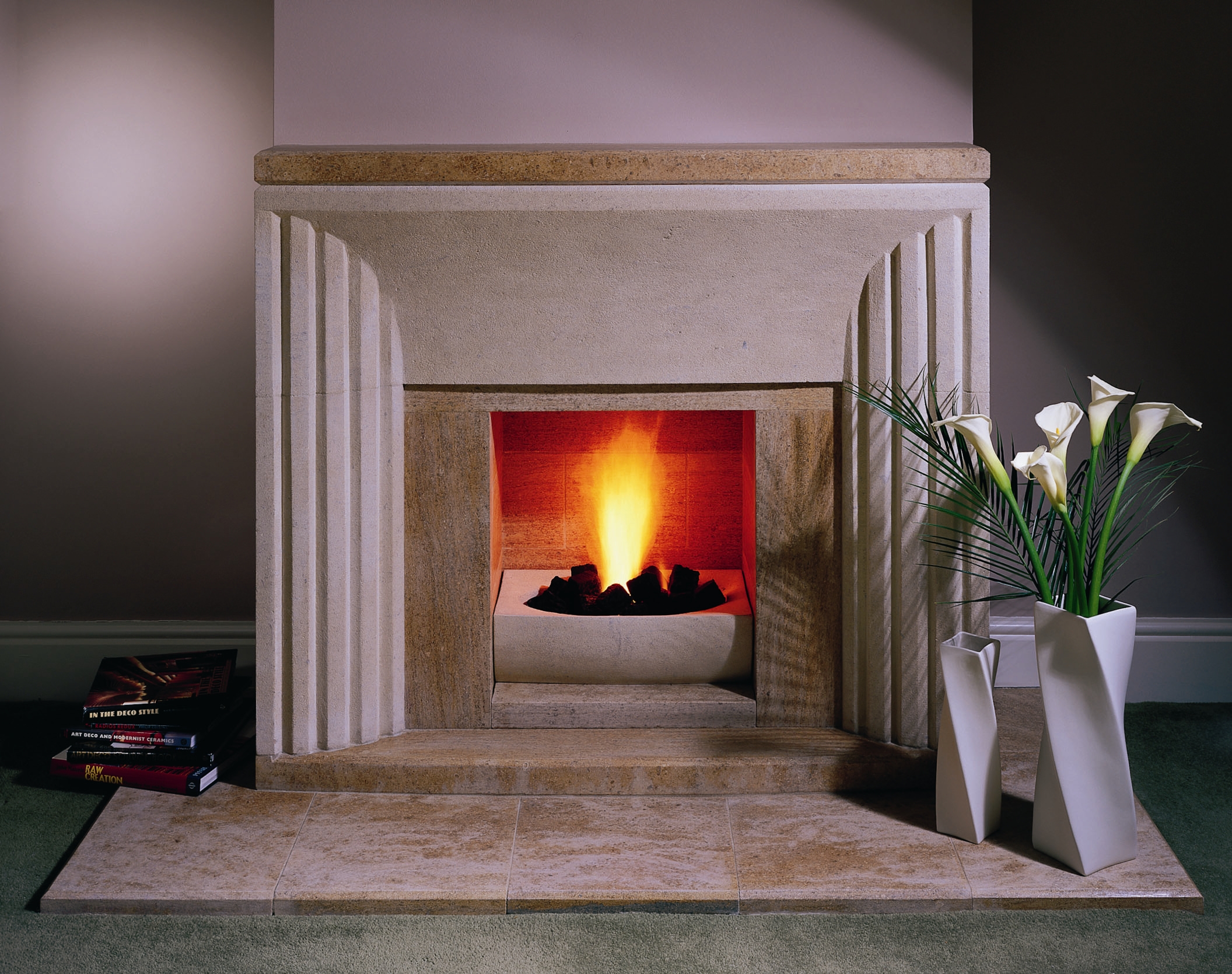
Talk to us…
There are many ways that we can use different types of stone, whether as a solid stone staircase, carved fireplace or bespoke flooring. Talk to us about your project and we will work with you to select the perfect material.

